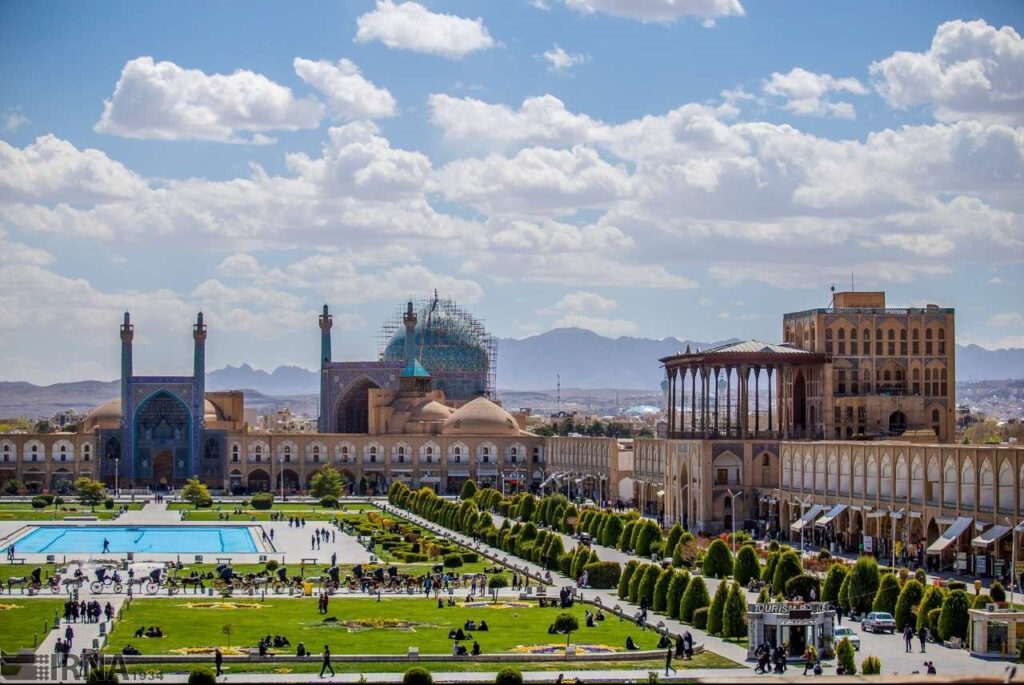Tehran – Isfahan authorities are planning to conduct a comprehensive study to assess the extent of land subsidence in UNESCO-listed Naksh-e-Jahan Square amid growing concern that the phenomenon poses some of Iran’s most precious architectural heritage.
A research agreement of 2 billion rials (approximately $22,000) has been signed to monitor and assess the sinking rates of historic sites, according to Amir Kalamza, director of Isfahan’s Cultural Heritage, Tourism and Handicrafts.
The largest and most important squares in the world are several monuments from the Safavid period of the 17th century, including the Imam Mosque (originally named Shah Mosque), Sheikrotophora Mosque and Alikapu Palace.
“The purpose of this study is to propose a solution that will mitigate the impact of land subsidence on Naqsh-e Jahan and its surrounding monuments,” Karamzadeh told Irna on Monday.
He noted that the issue is beyond Naqsh-e Jahan and affects other historical structures of the city. Regular monitoring of the subsidence effect is also carried out at major heritage landmarks such as the Jammeh Abbasi Mosque, Sheikh Lottofola Mosque and Ali Kapu Palace.
Recent data from Iranian geological surveys show that Isfahan experiences land subsidence at an average rate of 15-18 centimeters per year, the IRNA reported.
Experts believe the crisis is largely due to overextraction of groundwater in the Volkhar plains. This is a result of chronic water shortages and inadequate river flows from the famous Zayandeld River.
Karamzadeh has confirmed that special sessions are being held with the national authorities, who is the Minister of Cultural Heritage and the head of Iran’s planning and budget organization, highlighting the urgency of the potential threat and asking for dedicated funds.
“A national approach is essential,” Kalamzadeh said, adding that both the regional Crisis Management Bureau and the Ministry of Cultural Heritage are currently under review to address the damages caused by the subsidence.
Environmental experts continue to warn that excessive groundwater withdrawal and blockade of water flowing across the historic Zayandeld River could pose threats and extend risks to Isfahan.
The ancient city of Isfahan, which also serves as the capital of the province, is at a crossroads of Iran’s north and east-west trade routes. It reached its peak between the 9th and 18th centuries. During the Safavid era, it became the capital of Iran under Shah Abbas the Great.
Isfahan once stood at a crossroads in Iran’s international trade and diplomacy, but now for good reason it is one of Iran’s top tourist destinations. It is filled with many architectural wonders, including unparalleled Islamic buildings, bazaars, museums, Persian gardens, tree-lined paths and more. It is a city where you walk, get lost in a bazaar, a city where you can doze off in beautiful gardens and meet people.
The Persian proverb “Isfahan Nezuf e Jahan Asto” (Isfahan is half the world) reflects the cultural and historical prominence of the city.
morning

